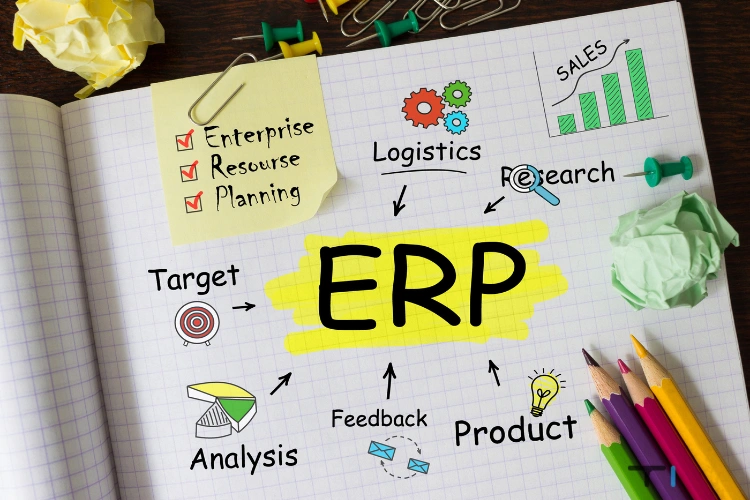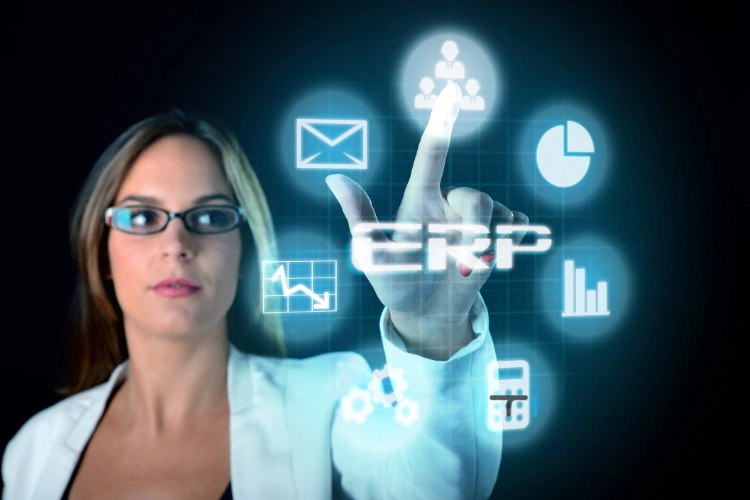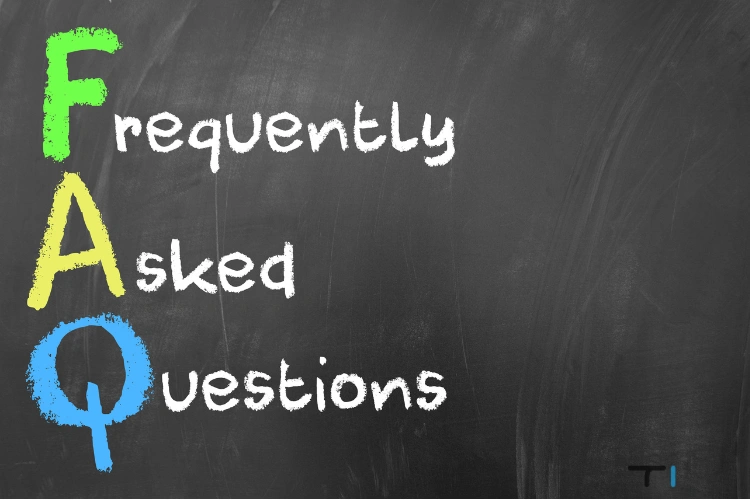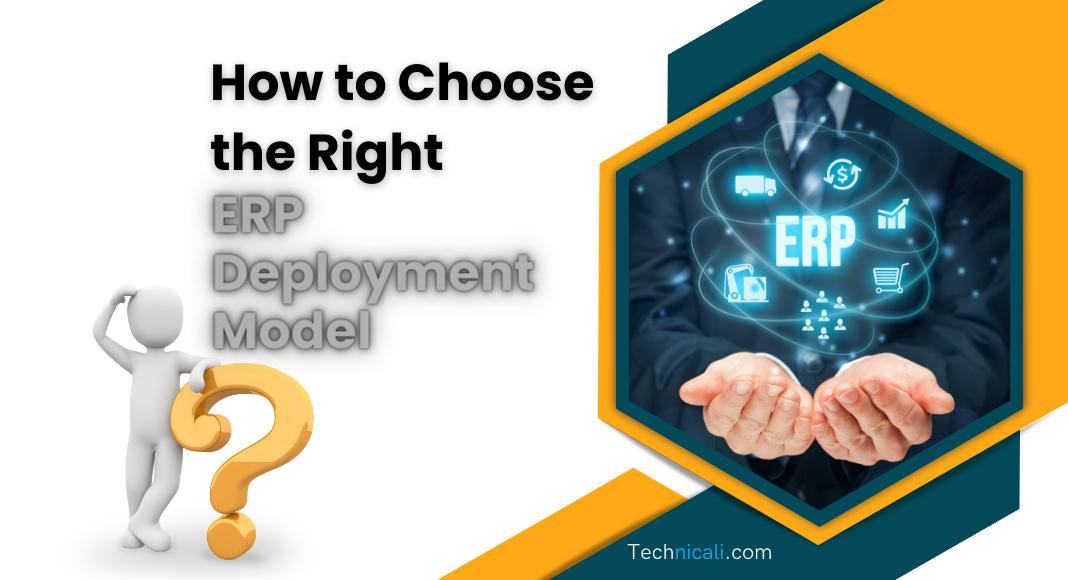“May your choices reflect your hopes, not your fears.” – Nelson Mandela
In today’s fast-paced business landscape, staying ahead of the competition is like being a strategic ninja, especially when choosing the perfect Enterprise Resource Planning (ERP) deployment model. As the CEO or manager of a SaaS business, you get the importance of optimizing your operations and customer experience to kick some serious growth and success. This blog post is your ultimate guide to navigating the wild world of ERP deployment models, helping you make kickass decisions that align with your organization’s goals and values.
Contents
- 1 Definition and Importance of ERP Deployment Models
- 2 Understanding ERP Deployment Models
- 3 The Need for ERP Software Deployment Models
- 4 Key Features of ERP Deployment Models
- 5 Benefits of ERP System Deployment Models
- 6 Which is the Best ERP Deployment Model for Your Business?
- 7 Future Aspects of ERP Deployment Models
- 8 Conclusion
- 9 FAQs
Definition and Importance of ERP Deployment Models
Before we get knee-deep in the nitty-gritty of ERP deployment models, let’s first get a solid grasp on what the heck they are. ERP deployment models are the fancy ways we host, access, and manage ERP software within a company. Trust me, these models have different flavors, each with its own perks and quirks.
Picking the right ERP (Enterprise Resource Planning) deployment model is a big deal. Choosing the right sidekick for your business can make or break your performance, customer satisfaction, and overall success.
The deployment model you go for will shape how you handle data, adapt to changes, and keep sensitive info under lock and key. So, before you make any moves, explore all your deployment options like a rebellious renegade and understand the consequences.
Consider stuff like scalability, customization, maintenance, integration, and cost-effectiveness. Make a choice that aligns with your goals and sets the stage for epic growth and success.
Understanding ERP Deployment Models

On-Premises ERP Deployment
So, regarding on-premises ERP deployment, you’re hosting the ERP software on servers on your turf. It’s like completely controlling your data, software vendor, and infrastructure.
Cloud ERP Deployment
Cloud ERP deployment is like having a cool party for your software. Instead of hosting it yourself, you let the pros handle it remotely. There is no need to worry about infrastructure; just hop online and access it from anywhere! With the cloud’s superpowers, you get scalability, flexibility, and top-notch security.
Hybrid ERP Deployment
Hybrid ERP deployment is like having the best of both worlds, blending on-premises and cloud models seamlessly. It’s like having your cake and eating it too! You get to segment your data based on sensitivity, keeping the important stuff safe on-premises while still enjoying the cloud’s scalability and accessibility.
The Need for ERP Software Deployment Models

Hey there, as a badass SaaS business executive, you get that picking the right ERP deployment model isn’t just some random choice. It’s a strategic decision that messes with your operations and customer experience.
Scalability and Flexibility
Scalability is like having a superpower to conquer any business challenge! Your deployment model should be flexible enough to scale resources up or down as your business grows or evolves. It’s all about staying one step ahead.
Cost Efficiency
When it comes to making decisions, you gotta keep an eye on the moolah. Cost considerations are hella important, my friend. So, it’s crucial to thoroughly check out the upfront costs, ongoing maintenance needs, and potential savings with each deployment model. Take your time, do your homework, and make informed decisions about your budget and long-term goals.
Accessibility and Mobility
In this mobile world, accessibility is the name of the game. Make sure your chosen model can handle remote access and collaboration.
Security and Compliance
Don’t forget, data security and compliance requirements should be right up there in your noggin’. Ensure your chosen model matches all those industry-specific rules and regulations.
Key Features of ERP Deployment Models

Every ERP deployment model brings tricks designed to suit different organizational needs. Now, buckle up as we delve into these nifty features and unravel their secrets.
On-Premises ERP Features
1. Data Control
In an on-premises model, you’ve got total data dominion. It’s all stored locally, keeping those pesky external breaches at bay. No trespassers allowed!
2. Customization
You have the power to customize the ERP system to match your business processes and needs. It’s like a twist, giving you the freedom to make it truly yours.
3. Integration
Forget about those fancy cloud systems! On-premises systems can hook up with your existing software and hardware, ensuring data flows like a boss.
4. Data Security
Data security gets an upgrade when your data stays put in your physical premises. No unauthorized access here.
5. Compliance Control
On-prem ERP is like having a secret weapon to keep up with industry rules and data privacy standards.
Cloud ERP Features
1. Automatic Updates
Cloud ERP systems are the bomb! You get automatic updates and patches, so you’re always rocking the latest features and security enhancements. No more manual update headaches, my friend. With cloud-based solutions, you can focus on your core business and chillax, knowing your ERP system is up-to-date and secure.
2. Accessibility
You can access the system anywhere with an internet connection, giving you the power to work and collaborate remotely.
3. Scalability
With Cloud ERP, you can effortlessly scale resources up or down depending on your biz needs.
4. Cost Efficiency
Why bother with big capital investments when you can use a pay-as-you-go subscription model? It’s all about lower upfront costs and sticking it to the establishment!
5. Global Reach
Cloud ERP is the ultimate choice for businesses with multiple locations or global operations. It’s like having a secret weapon that gives you consistent access and effortless data management.
6. Disaster Recovery
Data gets backed up in multiple places spread out across the globe, giving organizations some serious disaster recovery superpowers. So, if anything goes haywire or the world goes bonkers, fear not! We have your data covered. With redundant backups in different locations, we’re like a badass fortress protecting your precious info.
Hybrid ERP Features
1. Data Segmentation
Hybrid ERP is the ultimate rebel with a cause! It’s got your back by keeping sensitive data on-premises, ensuring top-notch security and compliance. But wait, there’s more! It also harnesses the cloud’s power for scalability and flexibility because who doesn’t love a little rebellious agility? This dynamic duo of on-premises security and cloud coolness gives you the best of both worlds.
2. Flexibility
The hybrid model is like having the best of both worlds – it’s flexible, so you can mix and match on-premises and cloud solutions to suit your needs.
3. Integration Benefits
This bad boy supports both on-premises and cloud integrations, making hybrid IT environments a breeze and seriously boosting data flow.
4. Cost Optimization
Do you wanna save some serious cash? Here’s the deal: store your non-sensitive data in the cloud and keep the critical stuff in-house.
5. Scalability
Like cloud ERP, the hybrid model gives you the best of both worlds – scalability for certain functions and the rebellious control over critical data at your fingertips.
6. Compliance Control
You can keep your sensitive data on-premises to play it safe and stay compliant.
7. Remote Access
Who needs a boring office when employees can access cloud-based services from anywhere? Work in your PJs, on the beach, or even from outer space! Embrace the freedom and flexibility of remote work arrangements. The revolution starts now!
8. Legacy System Integration
The hybrid model lets you sneakily hook up with your old-school on-premises systems while slyly transitioning to cool and rebellious cloud-based solutions.
9. Resource Allocation
Making sure you allocate resources smartly to the perfect deployment model for each part of your business ops is key to rocking it with top performance and saving some serious cash!
Benefits of ERP System Deployment Models

Now that we’ve delved into the intricacies and types of ERP deployment models and their key features, let’s explore the specific benefits associated with each model.
On-Premises ERP Benefits
1. Data Control
Who needs those fancy cloud-based ERPs when you’ve got the good ol’ on-premises ERP? With on-premises ERP, your organization gets to keep a tight leash on its data, ensuring it stays within the confines of your physical infrastructure. Talk about rebels with a cause! This control means enhanced data security and compliance, just the way you like it.
2. Security
Keeping your data safe and sound is a big deal for any business. No one wants their sensitive info floating around like a bad rumor. That’s where on-premises ERP systems come in clutch. They store your data locally, so it’s like keeping it locked up tight in a secret hideout.
Cloud ERP Benefits
1. Cost Savings
One of the kickass advantages of cloud ERP is cost savings, my friend. You can say goodbye to those upfront capital expenditures and hello to a more attractive option for businesses of all sizes.
2. Accessibility
Cloud ERP systems give users access from anywhere with an internet connection, promoting wicked collaboration and making remote work a breeze. That’s what’s up in today’s business landscape.
3. Collaboration Tools
Many cloud ERP solutions come equipped with badass built-in collaboration features, making teamwork seamless and communication effective within your organization. These features enable real-time collaboration, document sharing, and task and project management, empowering teams to work together like a well-oiled machine and achieve their goals like bosses. By unleashing these advanced collaboration capabilities, businesses can streamline their operations, crank up their productivity, and foster a culture of collaboration and innovation.
Hybrid ERP Benefits
1. Flexibility
Flexibility is where it’s at with the hybrid ERP model. Customize your ERP implementation strategy to match your organization’s unique needs and compliance requirements.
2. Data Segmentation
By splitting up sensitive data on-premises and rocking the cloud for other functions, hybrid ERP takes data security and privacy to a new level.
3. Integration Benefits
The hybrid model supports on-premises and cloud integrations, making data flow as smooth as silk and creating a killer hybrid IT environment.
4. Cost Optimization
Save those bucks by storing less sensitive data in the cloud and rocking on-premises solutions for critical operations.
Which is the Best ERP Deployment Model for Your Business?

Picking the ultimate ERP deployment model for your SaaS biz is a major-league decision that requires serious pondering. Let’s dive into the key factors to consider when making this make-or-break choice.
Factors to Consider
1. Business Size: When figuring out which ERP deployment model is right for your organization, the size of your business is a big deal. Whether you’re a small fry, a medium fish, or a giant shark, each one has its fancy-pants requirements and budgets to think about. By understanding the specific needs and limitations of your organization’s size, you can stick it to the man and make a smart decision that aligns with your goals and objectives.
2. Industry: When it comes to the industry your SaaS business is in, you gotta consider those pesky compliance and security requirements. They can mess with your choice of deployment model! Don’t fret. By carefully evaluating and getting what these industry-specific factors are all about, you can stick it to the man and make smart decisions that rock your target market. Your SaaS business will be successful and secure.
3. Budget: Look at your financial resources and figure out if you’re into swinging the cash upfront or just rolling with a pay-as-you-go subscription model.
4. Scalability: When assessing your growth expectations, it’s crucial to think about how well the ERP model can handle your business’s ups and downs. You want a system that can scale like a champ when you’re on the rise or scale back when you need to take it easy. It’s all about having a kickass and flexible system that supports your ever-changing needs and keeps your operations running smoothly, no matter what.
5. Data Sensitivity: Figure out how sensitive your data is and if it needs an on-premises solution’s tight security and control. Don’t let your data roam free like a wild bird.
6. Accessibility: Think about remote access, especially if you’ve got folks working from all over the place. You know, stick it to the man and make sure everyone can get their work done, no matter where they are!
7. IT Expertise: Look at your in-house IT skills and resources to handle and back up the chosen ERP deployment.
8. Integration Needs: To pull off the new ERP system like a boss, you gotta suss out and size up the existing systems and apps that need to be integrated. This badass analysis will guarantee a smooth flow of data so everyone can communicate and collaborate like a well-oiled machine. By carefully checking if these systems can play nice with each other, businesses can level up their operations and make better decisions. And guess what? That means more productivity and an all-around kickass performance.
9. Compliance Requirements: Check if your industry has any fancy-pants regulatory compliance needs that might mess with your choice of deployment model.
10. Future Strategy: Consider your long-term business strategy and ask yourself, “Does the chosen ERP solution and deployment model vibe with your future goals and all those fancy technological advancements?” You’ve gotta make sure you’re not just following the crowd.
By meticulously evaluating these factors, you can make a savvy call on the top-notch ERP deployment model that perfectly suits your business’s unique needs and goals.
Future Aspects of ERP Deployment Models

As technology keeps on evolving, even ERP deployment models ain’t safe from change. Let’s dive into the latest trends and future possibilities in the wild world of ERP.
Current Trends in Enterprise Resource Planning
1. AI and Machine Learning Integration: AI and machine learning sneaking into ERP systems? It’s all the rage now! These bad boys give organizations the upper hand with fancy data analysis and predictions. Talk about making decisions like a boss and being super efficient! By tapping into AI and machine learning, businesses can unlock a new world of optimization, automation, and innovation within their ERP systems.
2. IoT Connectivity: The connectivity of IoT (Internet of Things) is getting hella important in today’s digital world. It’s like giving superpowers to ERP systems to effortlessly gather and crunch massive amounts of data from all sorts of connected devices. And guess what? Businesses can use those juicy insights to make smarter decisions, boost efficiency, and rock their productivity game!
3. Data Analytics: Advanced data analytics tools are rocking the decision-making game for ERP systems. They’re like superpowers that give businesses valuable insights to make strategic moves. With these fancy tools, organizations can crunch complex data, spot patterns, and uncover hidden trends. It’s all about making smart choices that optimize operations, boost productivity, and kick some serious butt in the digital world. So, ready to unleash your competitive edge with advanced data analytics – because the future is now!
Predictions and Evolving Technologies
1. Edge Computing: The adoption of edge computing, a rad decentralized approach to data processing, will shake up ERP deployment big time! With real-time data processing happening at the edge of networks, organizations can crunch numbers faster than a cheetah on caffeine. Say goodbye to sluggish decision-making and hello to lightning-fast analysis! This shift to edge computing brings reduced latency, increased scalability, and enhanced security, flipping the script on how businesses use their enterprise resource planning systems.
2. Blockchain Integration: With its decentralized and immutable nature, Blockchain technology has the freaking potential to revolutionize ERP systems. By integrating blockchain, organizations can not only level up data security, transparency, and traceability but also kick some serious butt in improving operational efficiencies and slashing costs. With the ability to provide a single, trusted source of information, blockchain can enable seamless collaboration and kick some bureaucratic ass in streamlining complex business processes within ERP systems. Embracing this badass innovative technology opens up a whole new world of possibilities for optimizing data management and sticking it to the man by driving digital transformation in various industries.
Conclusion
When choosing the right ERP deployment model, you’re making a strategic decision that can have a big impact on your SaaS business. So, pay attention!
Consider your business size, industry, budget, and future strategy. Don’t forget to watch the latest trends and technologies in the ERP world, too. You want to position your business for success, right?
Remember, the right ERP deployment model can level up your customer experience, drive growth, and help you kick some serious butt in the wild world of SaaS. So, choose wisely and conquer those business goals!
FAQs

1. What is the primary difference between on-premises and cloud ERP deployment models?
The primary difference lies in where the ERP software is hosted. On-premises ERP is hosted on servers within your physical premises, while cloud ERP is hosted on remote servers by a third-party provider and accessed via the Internet.
2. How can I ensure data security in a cloud ERP deployment?
Data security in cloud ERP can be ensured through robust encryption, access controls, regular security audits, and selecting a reputable cloud provider with stringent security measures.
3. Is a hybrid ERP deployment suitable for businesses with fluctuating data sensitivity?
A hybrid ERP deployment is ideal for businesses with varying data sensitivity. It allows you to segment sensitive data on-premises while using the cloud for less sensitive functions.

